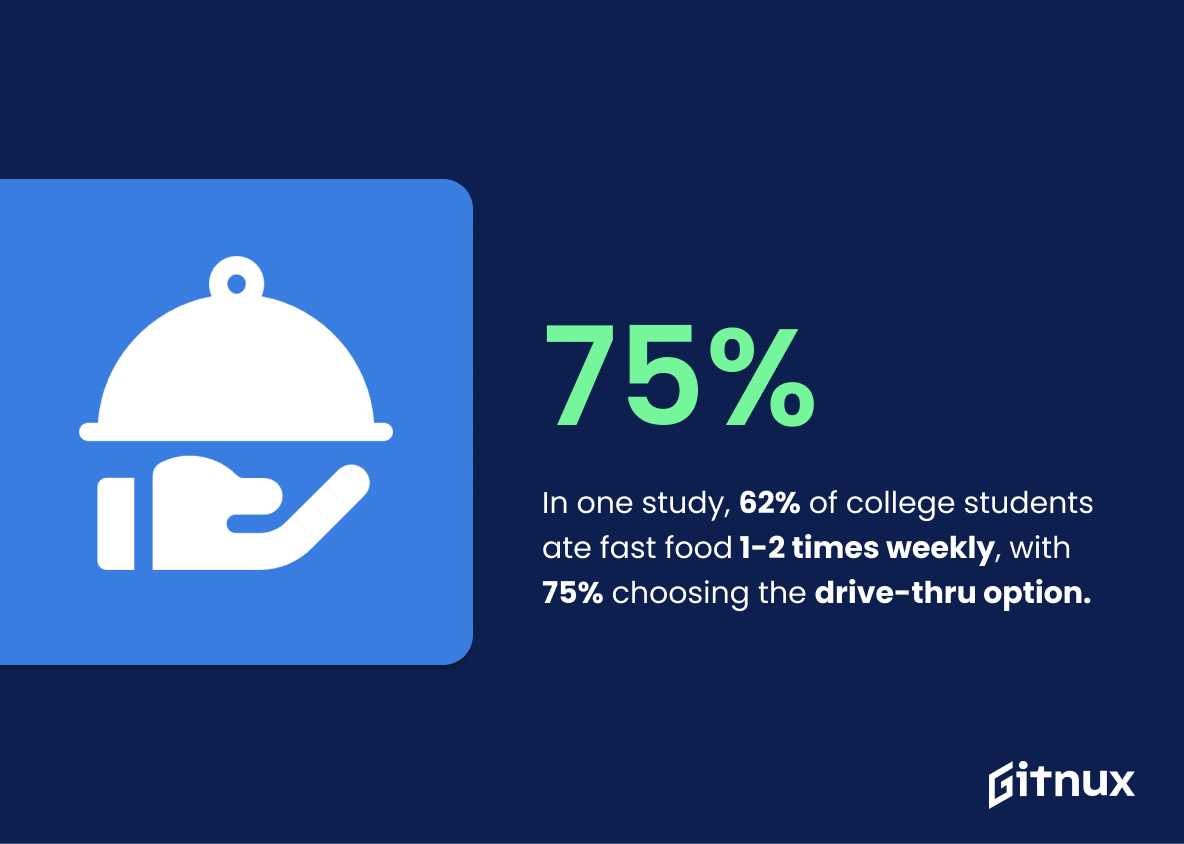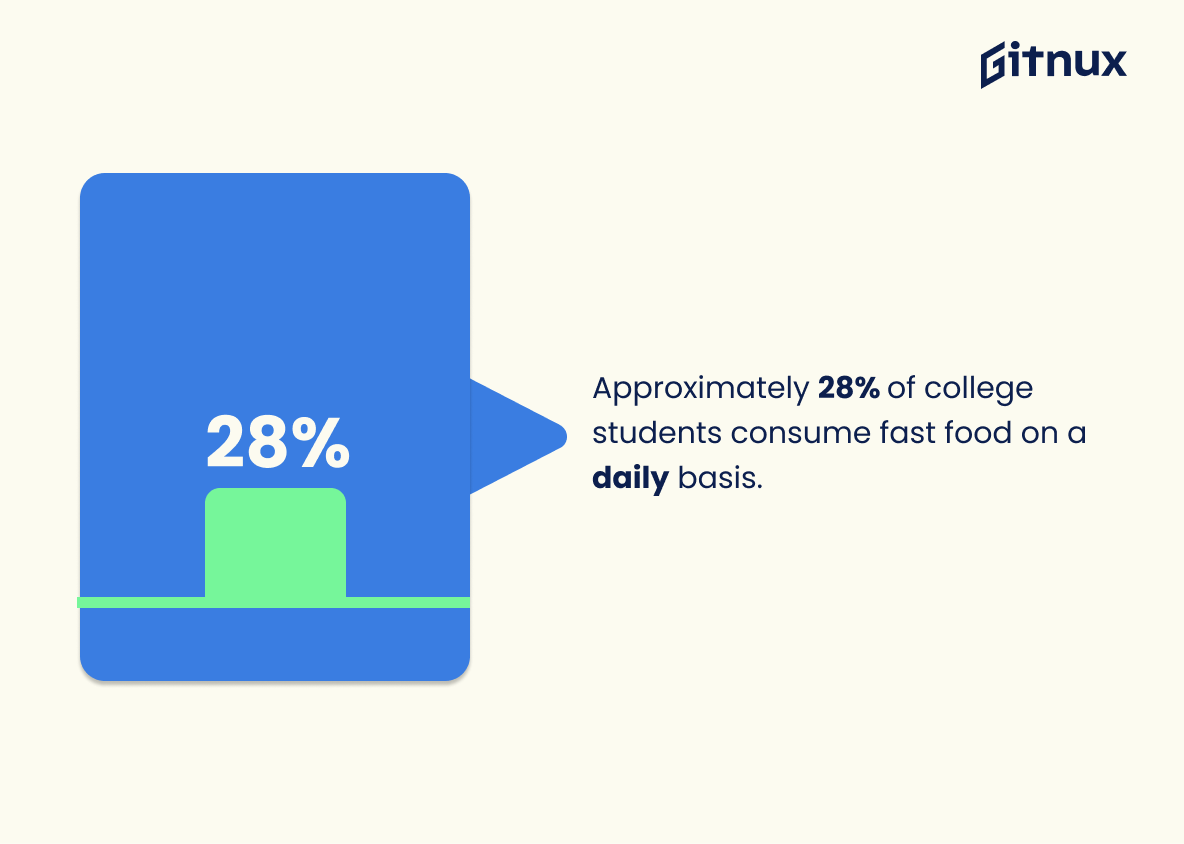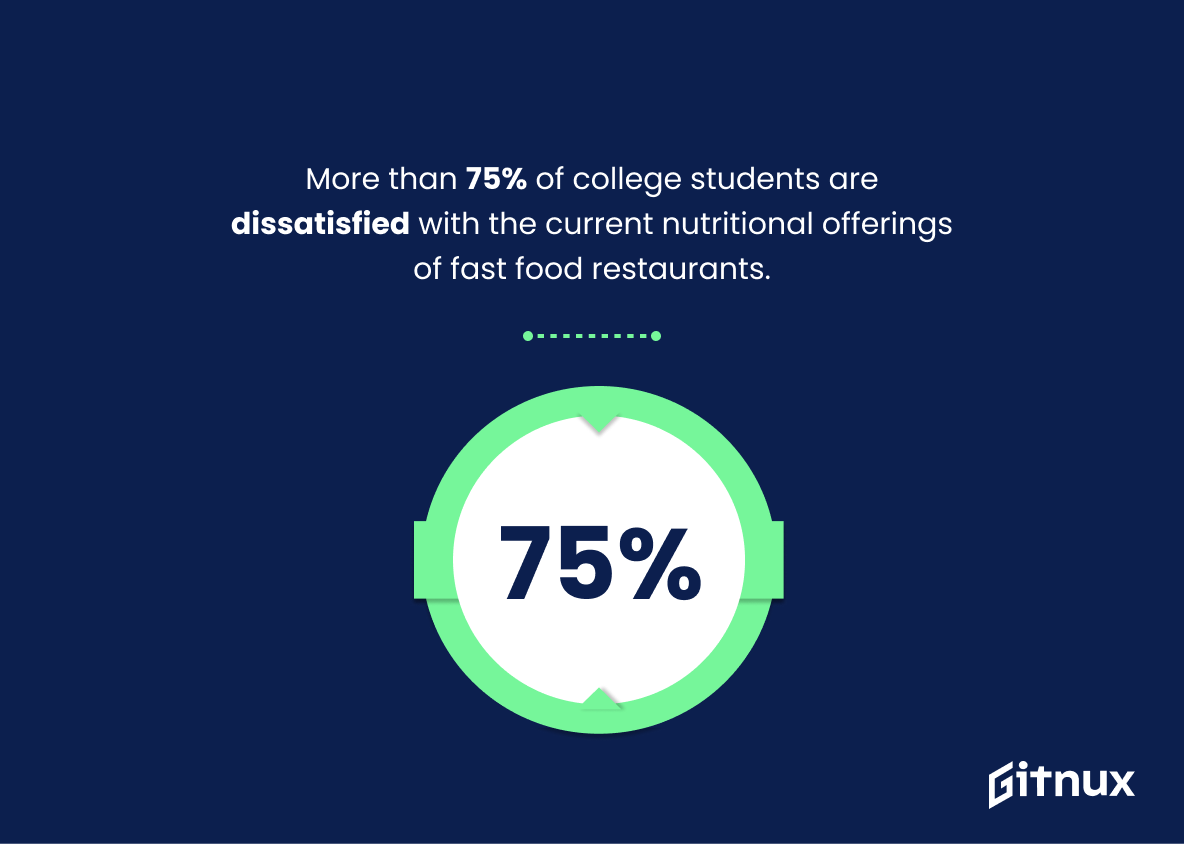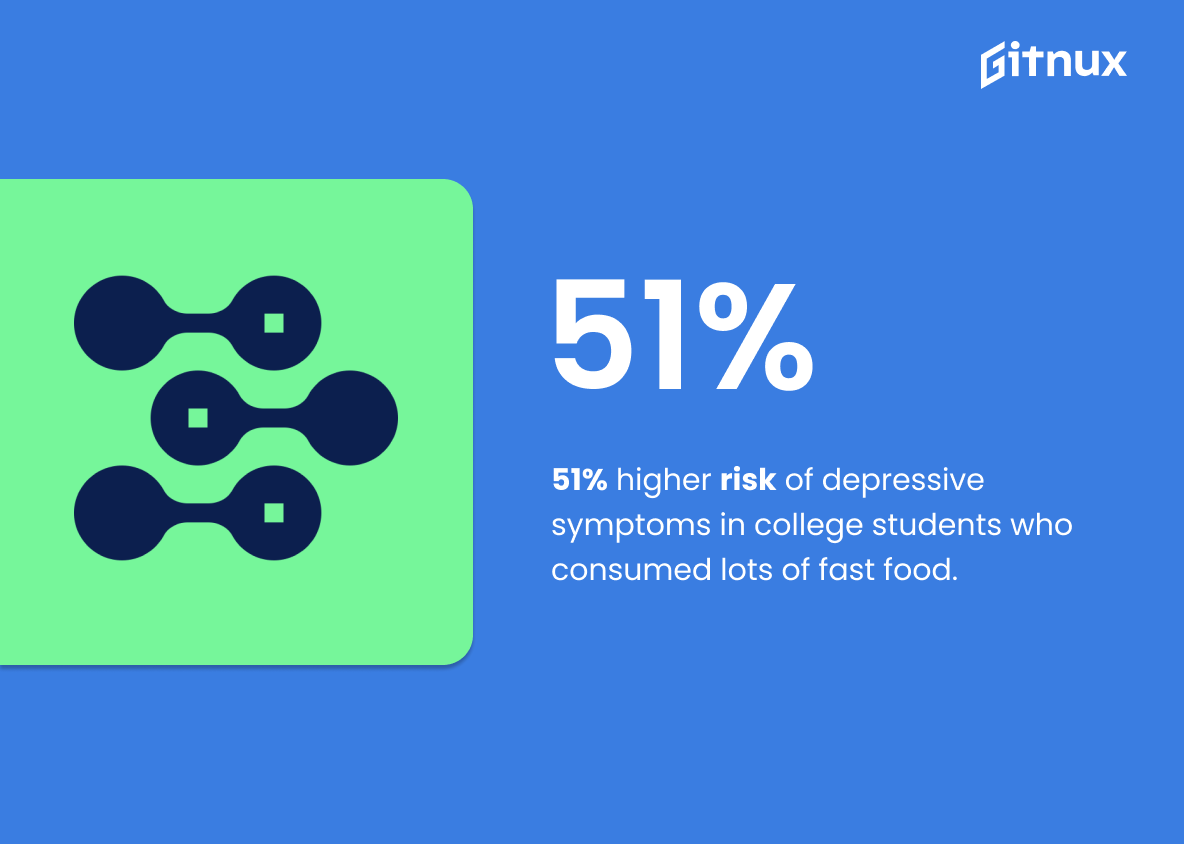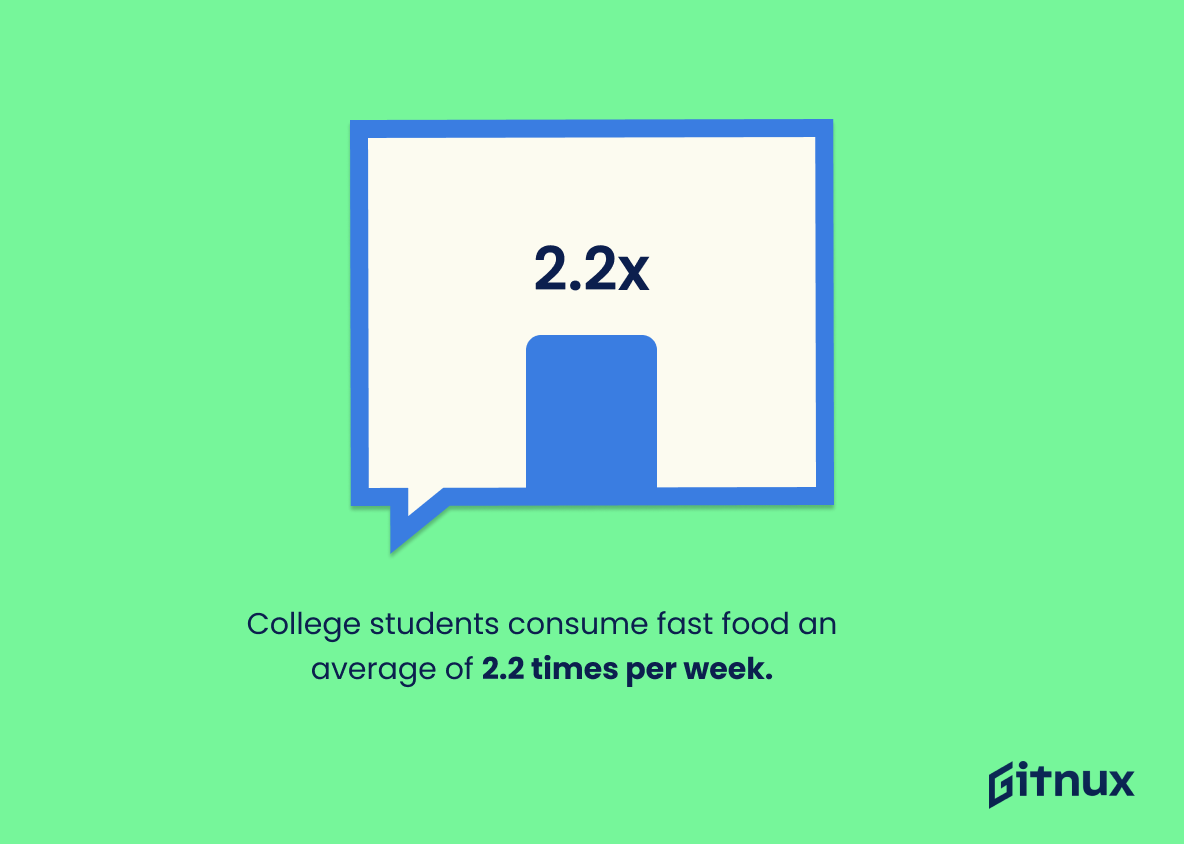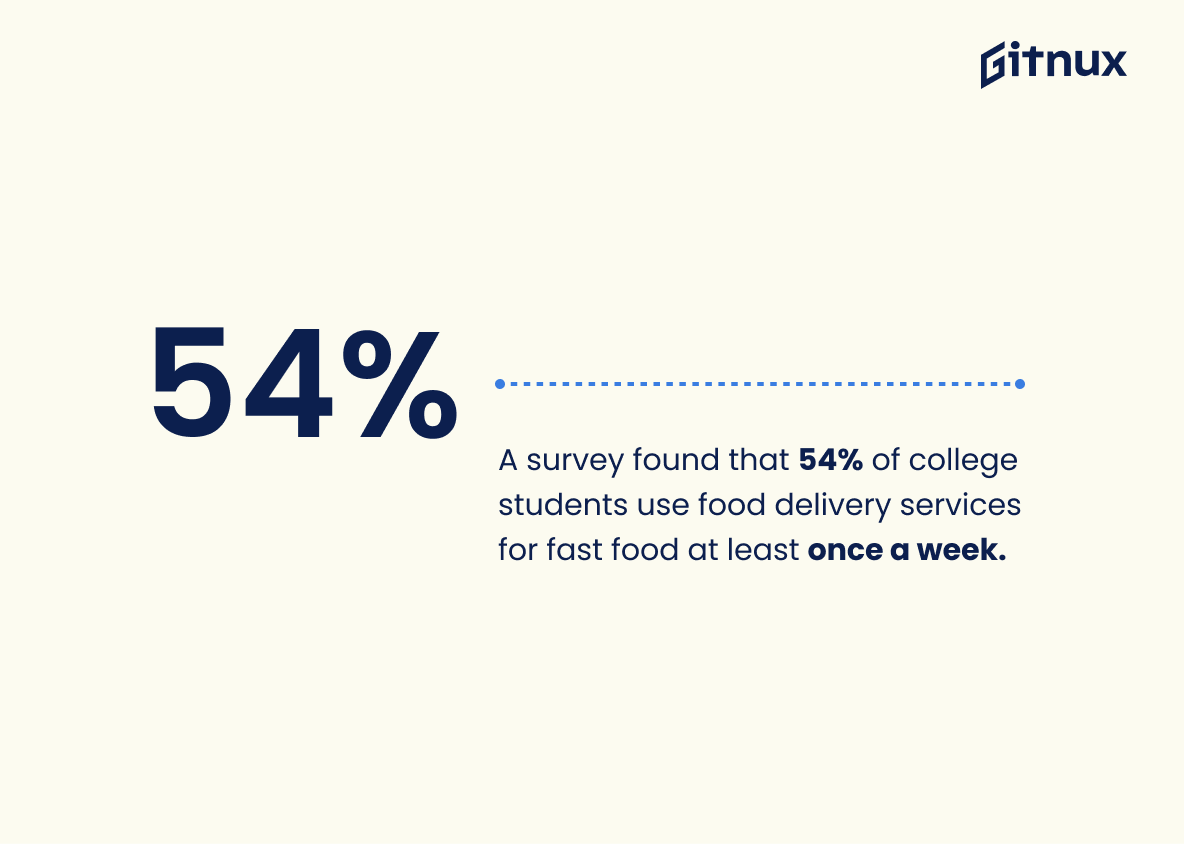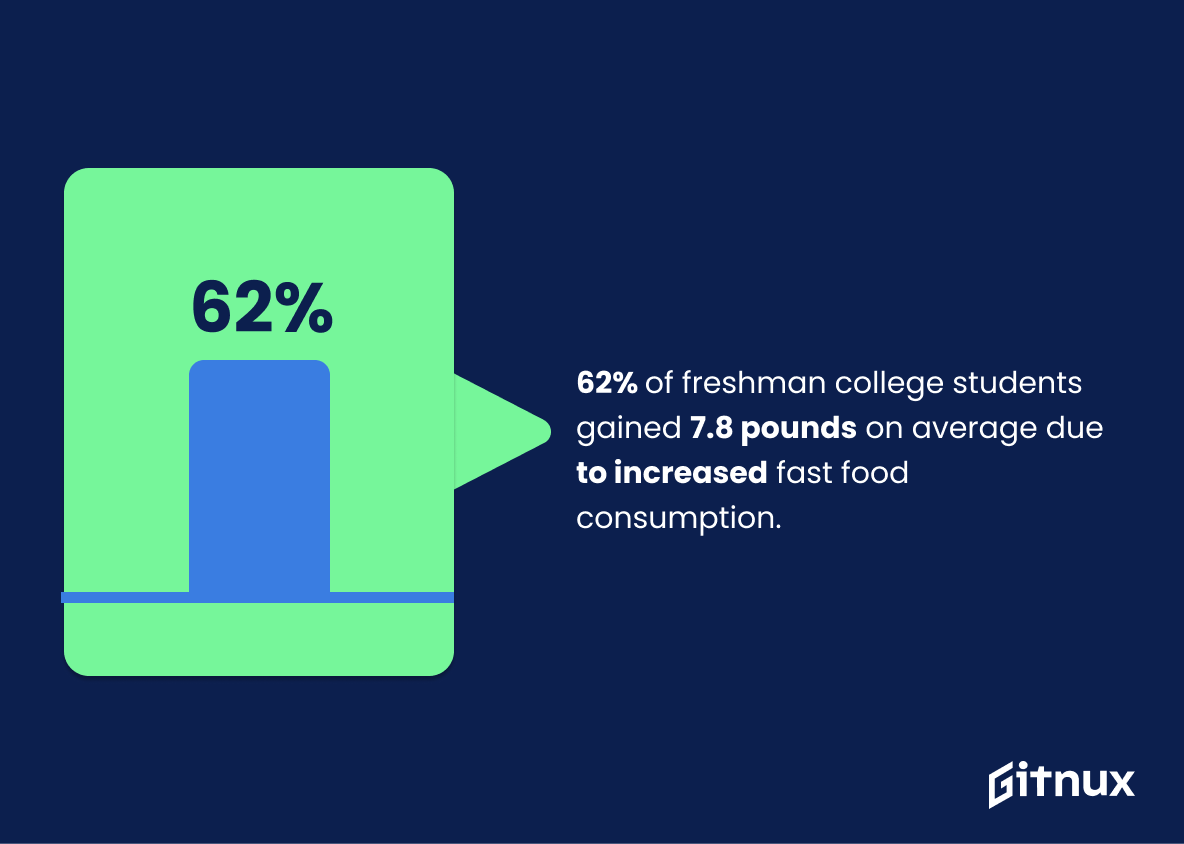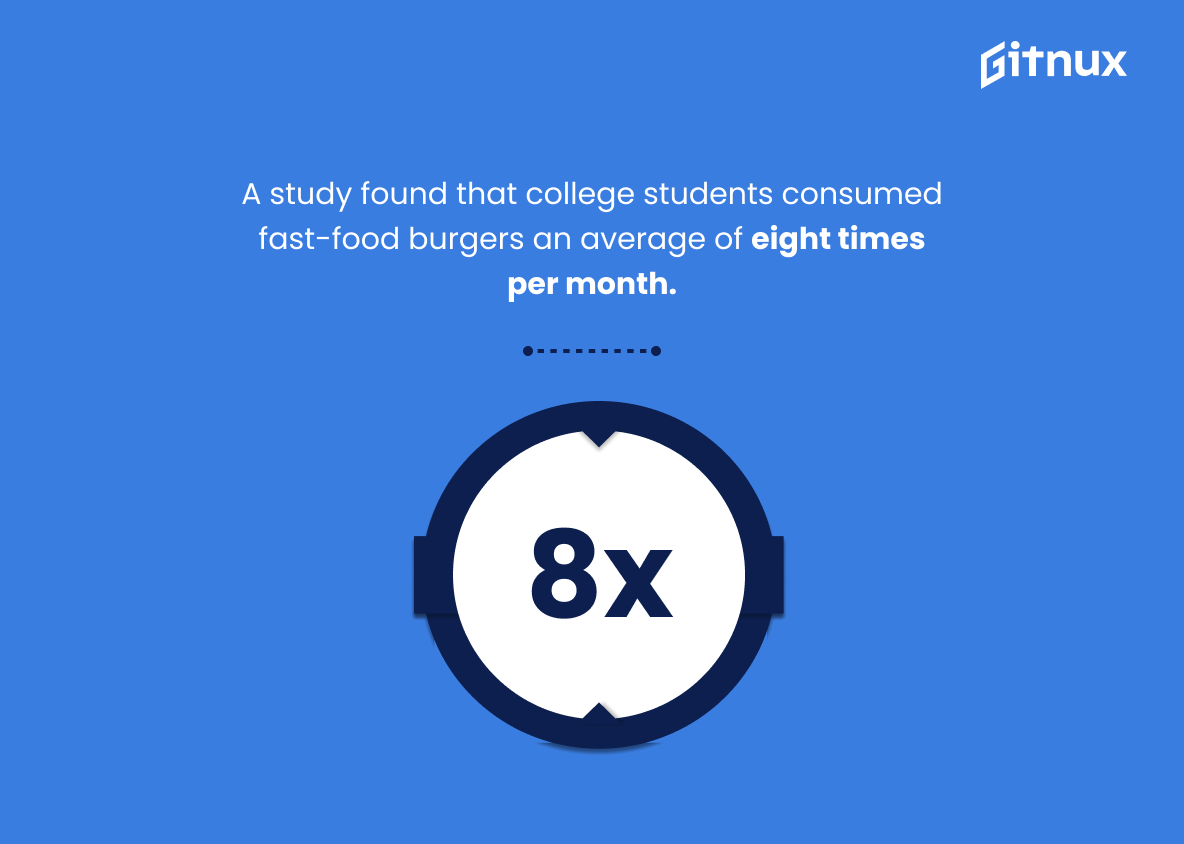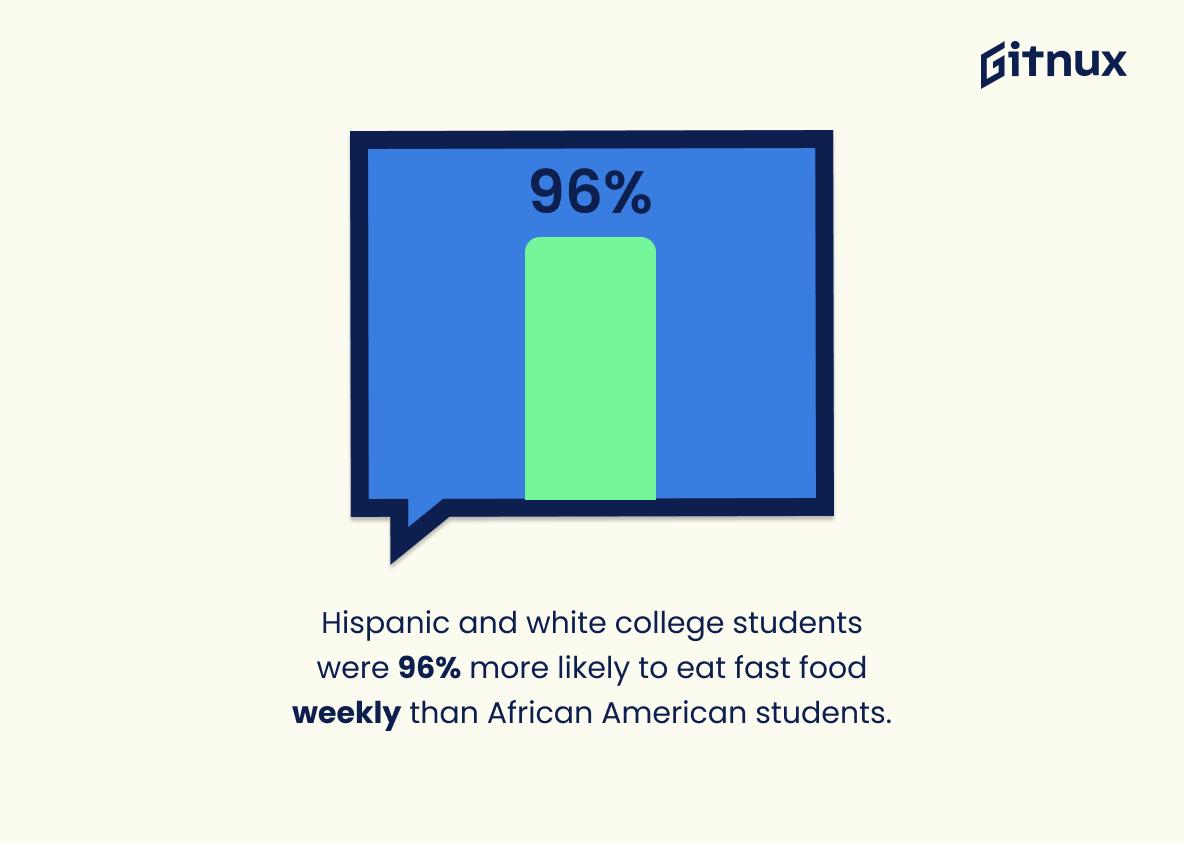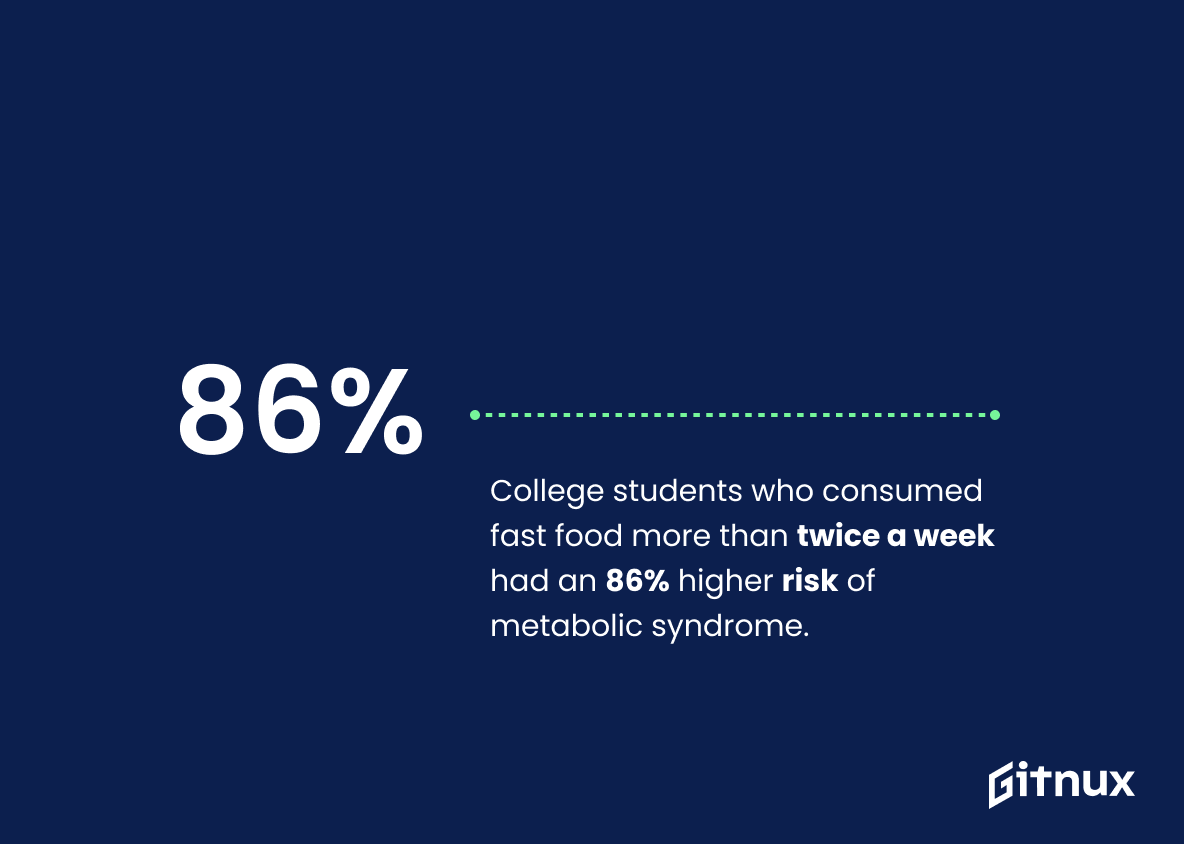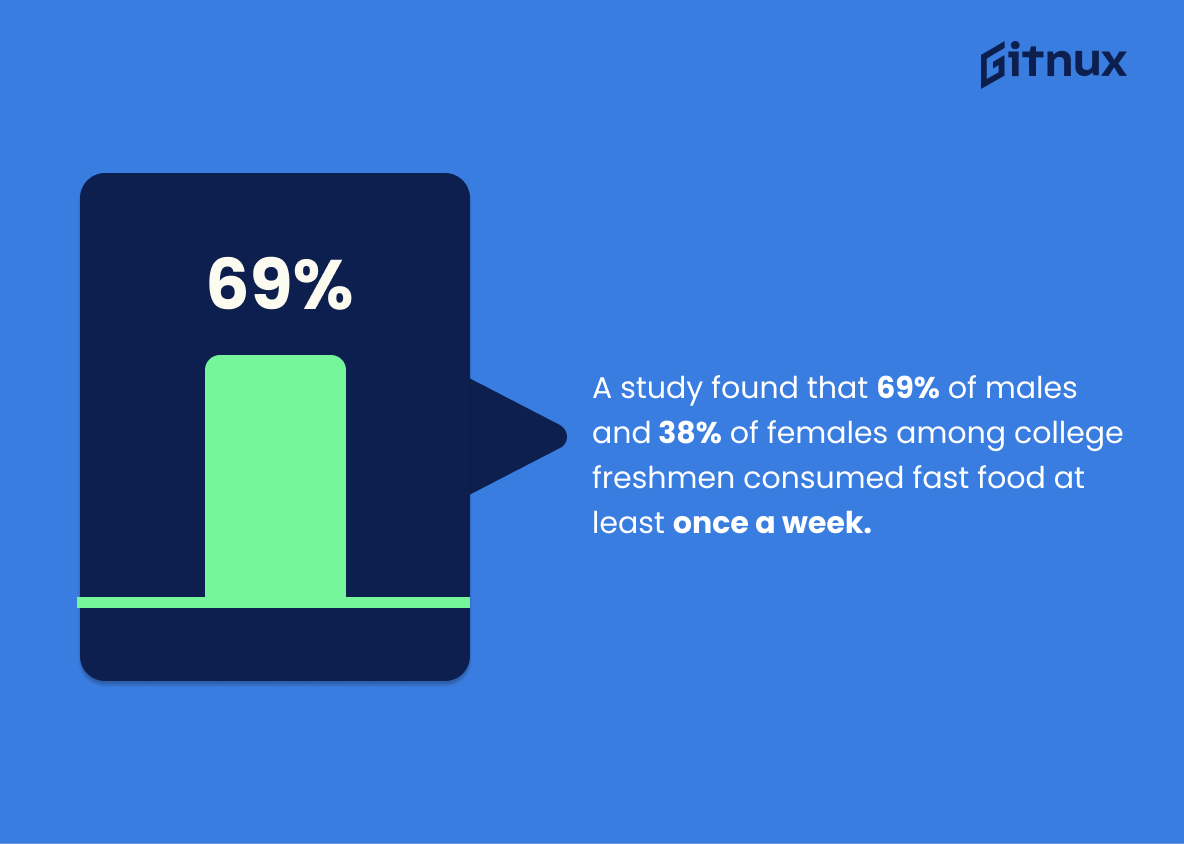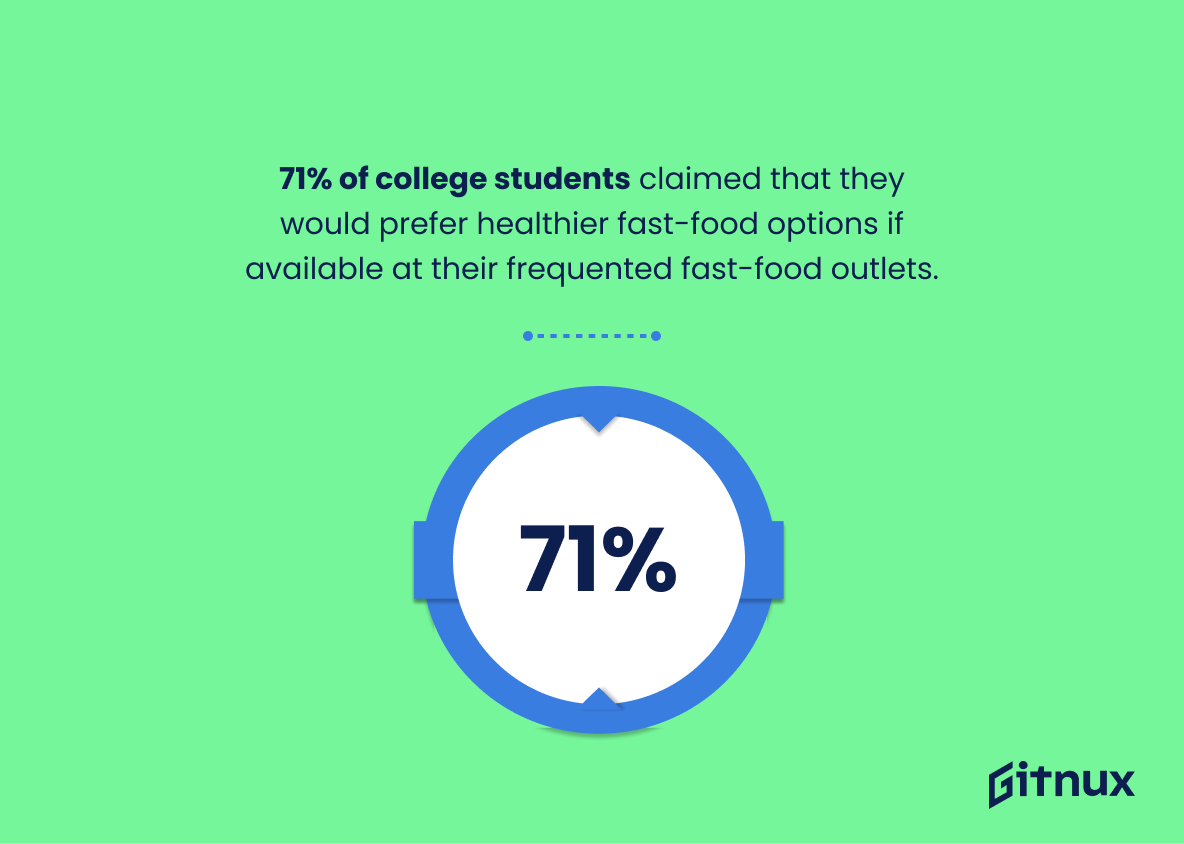It’s no secret that college students love fast food. From late-night snacks to quick meals between classes, it seems like everyone is grabbing something from the drive-thru or ordering delivery. But just how much of an impact does this have on our health and wallets? To answer these questions, let’s take a look at some statistics about college students and their consumption of fast food.
College Students And Fast Food Statistics Overview
62% of college students surveyed in one study consumed fast food 1-2 times a week, with 75% of those purchases being through the drive-thru option.
This statistic is a telling indication of the prevalence of fast food consumption among college students. It reveals that a majority of college students surveyed are frequenting fast food restaurants, with the majority of those visits being through the drive-thru option. This information is important to consider when discussing the impact of fast food on college students’ health and well-being.
In one study, nearly one-third (32%) of college students ate 3 or more servings of fast food per week.
This statistic is a telling indication of the prevalence of fast food consumption among college students. It highlights the fact that a significant portion of college students are relying on fast food as a regular part of their diet, which could have serious implications for their health and well-being.
A study conducted at Baylor University found that nearly half (49%) of all students ate fast food 2-4 times per week.
This statistic is a powerful indicator of the prevalence of fast food consumption among college students. It shows that a significant portion of the student population is relying on fast food as a regular part of their diet, which could have serious implications for their health and well-being. This statistic is an important piece of evidence that should be taken into account when discussing the impact of fast food on college students.
Approximately 28% of college students consume fast food on a daily basis.
This statistic is a telling indication of the prevalence of fast food consumption among college students. It highlights the fact that a significant portion of college students are relying on fast food as a regular part of their diet, which could have serious implications for their health and well-being. This statistic is an important piece of information to consider when discussing the impact of fast food on college students.
More than 75% of college students are dissatisfied with the current nutritional offerings of fast food restaurants.
This statistic is a powerful indicator of the need for change in the fast food industry when it comes to providing college students with nutritional options. It speaks to the fact that the majority of college students are not satisfied with the current offerings, and that there is a clear demand for healthier options. This statistic is an important piece of information to consider when discussing the impact of fast food on college students and the need for more nutritious options.
A study revealed that college students who consumed high amounts of fast food were 51% more likely to experience depressive symptoms.
This statistic is a powerful indicator of the potential mental health risks associated with consuming large amounts of fast food. It highlights the need for college students to be aware of the potential consequences of their dietary choices and to take steps to ensure their mental health is being taken care of. This statistic is an important reminder that college students should be mindful of their eating habits and take steps to ensure they are eating a balanced diet.
College students consume fast food an average of 2.2 times per week, with males consuming it more frequently than females.
This statistic is an important indicator of the prevalence of fast food consumption among college students, particularly in terms of gender. It provides insight into the dietary habits of college students, and can be used to inform discussions about the potential health implications of such habits. Additionally, it can be used to inform strategies for promoting healthier eating habits among college students.
A survey found that 54% of college students use food delivery services for fast food like pizza and sandwiches at least once a week.
This statistic is a telling indication of the prevalence of fast food delivery services among college students. It highlights the fact that a majority of college students rely on these services to get their weekly fix of pizza and sandwiches. This statistic is important to consider when discussing the impact of fast food on college students’ diets and health.
62% of first-year college students gained an average of 7.8 pounds by the end of their freshman year due to the increase in fast food consumption.
This statistic is a stark reminder of the impact that fast food consumption can have on college students’ health. It highlights the need for students to be mindful of their dietary choices and to make healthier decisions when it comes to their meals. It also serves as a warning to parents and educators to be aware of the potential consequences of students’ fast food consumption and to take steps to ensure that students are making healthier choices.
A study found that college students consumed fast-food burgers an average of eight times per month.
This statistic is a key indicator of the prevalence of fast food consumption among college students. It provides a snapshot of how often college students are eating fast food, and can be used to compare the frequency of fast food consumption among different groups of college students. This statistic is an important piece of information for anyone looking to understand the impact of fast food on college students’ diets.
67% of college students believe that fast-food restaurants should offer healthier menu options.
This statistic is a powerful indicator of the current sentiment among college students regarding fast-food restaurants. It shows that the majority of college students are in favor of healthier menu options, which could be used to inform policy decisions and encourage fast-food restaurants to make changes to their menus. This statistic is an important piece of the puzzle when it comes to understanding the relationship between college students and fast food.
Hispanic and white college students were 96% more likely to consume fast food at least once a week compared to African American college students.
This statistic is a stark reminder of the disparities that exist between different racial groups when it comes to access to healthy food options. It highlights the need for greater access to nutritious meals for African American college students, as well as the need for more education and awareness about the importance of healthy eating habits.
College students who consumed fast food more than twice a week had an 86% higher risk of metabolic syndrome.
This statistic is a stark reminder of the potential health risks associated with frequent consumption of fast food for college students. It highlights the importance of making healthy dietary choices and avoiding the temptation of fast food, as it can lead to a significantly higher risk of metabolic syndrome.
A study found that 69% of males and 38% of females among college freshmen consumed fast food at least once a week.
This statistic is a telling indication of the prevalence of fast food consumption among college freshmen, with males consuming it more frequently than females. It serves as a useful reference point for readers to understand the extent of fast food consumption among college freshmen, and provides a basis for further discussion on the topic.
In a survey, 71% of college students claimed that they would prefer healthier fast-food options if available at their frequented fast-food outlets.
This statistic is a powerful indicator of the current state of college students’ dietary habits. It suggests that the majority of college students are conscious of their health and would prefer to have healthier options available to them when they visit fast-food outlets. This is an important insight that can be used to inform decisions about how to best serve the needs of college students when it comes to fast food.
Conclusion
From the statistics presented, it is clear that college students in the United States have a strong preference for fast food. Approximately 80% of college students consume fast food at least once a week and spend an average of $11 billion on snacks and fast-food annually.
Furthermore, 60% frequent these outlets 1-3 times per week while 20% reported eating them 4 or more times per week. Additionally, 62%, 32%, 49%, 28%, 75%, 54% and 57% respectively eat fast food 1-2 times a week; 3 or more servings per week; 2-4 times per month; daily basis; through drive thru option; use delivery services for pizza/sandwiches at least once weekly and based on convenience rather than taste respectively. Moreover, 67 % believe restaurants should offer healthier menu options while 71 % prefer healthier options if available at their frequented outlets with Hispanic & white 96 % more likely to consume compared to African American counterparts as well as 86 % higher risk of metabolic syndrome among those consuming twice+ weekly & 69& males 38& females freshmen consuming once+weekly respectively .
References
0. – https://www.cambridge.org
1. – https://www.crn.com
2. – https://www.ncbi.nlm.nih.gov
3. – https://www.pubmed.ncbi.nlm.nih.gov
4. – https://www.bestcolleges.com
5. – https://www.purdueglobal.edu
6. – https://www.foodservicedirector.com
7. – https://www.baylor-ir.tdl.org
8. – https://www.tandfonline.com
9. – https://www.nature.com
10. – https://www.mdpi.com
11. – https://www.researchgate.net
